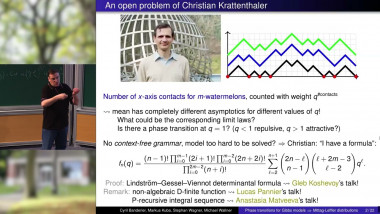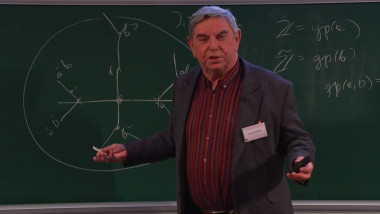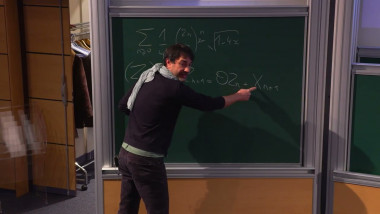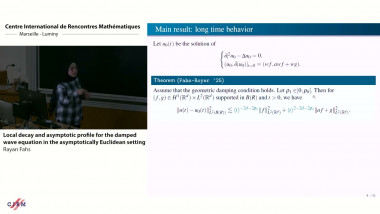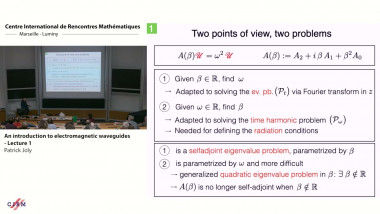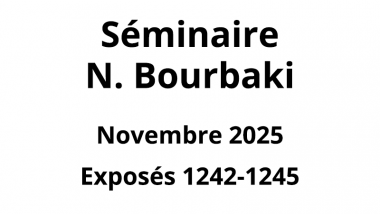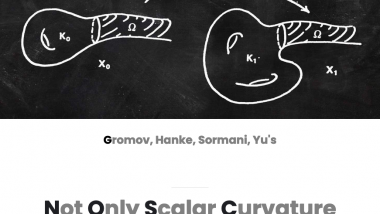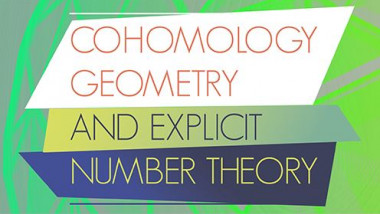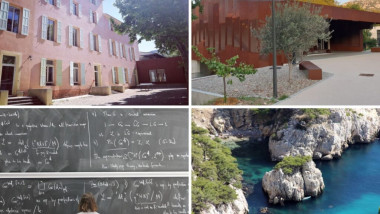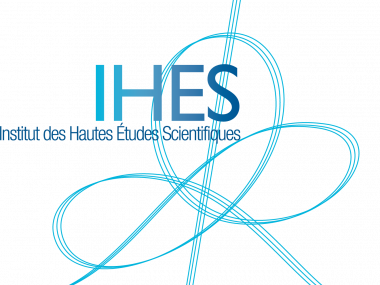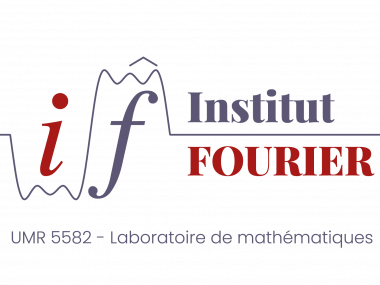Appears in collection : Random trees and maps: probabilistic and combinatorial aspects / Arbres et cartes aléatoires : aspects probabilistes et combinatoires
The celebrated Fisher-Kolmogorov-Petrovsky-Piscounof equation (FKPP) in one dimension for
$h:\mathbb{R} \times \mathbb{R}^+ \to \mathbb{R}$ is:
$\partial_th = \partial{_x^2}h + h - h^2, h(x, 0) = h_0(x)$.
This equation is a natural description of a reaction-diffusion model (Fisher 1937, Kolmogorov et al. 1937, Aronson 1978). It is also related to branching Brownian motion: for the Heaviside initial condition $h_0 (x) = 1{_x<0}$ , $h(x, t)$ is the probability that the rightmost particle at time t in a branching Brownian motion (BBM) is to the right of $x$.
One of the beauty of this equation is that for initial conditions that decrease sufficiently fast, a front develops, i.e. there exists a centring term $m(t)$ and an asymptotic shape $\omega(x)$ such that
$\lim_{t \to \infty} h(m(t) + x,t) = \omega(x) \in (0, 1).$
Since the original paper of Kolmogorov et al., the position of the front $m(t)$ has been studied intensely, in particular by Bramson. In this talk, I will present some recent results concerning a prediction of Ebert and van Saarloos about the vanishing corrections of this position.
Based on a joint work with E. Brunet.
